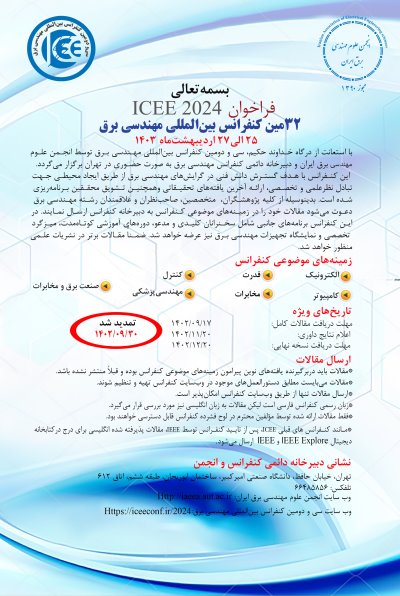0% Complete

نویسندگان :
کلمات کلیدی :
چکیده :
لیست مقالات بایگانی شده
Hossein Ahmadian - HeidarAli Talebi - Iman Sharifi
Mohammad Javad Abdollahifard - Reza Bahrami
محسن طاهری پور - نوید یثربی - شیرین نصراصفهانی - محمد حسین شیخی
مهدی جمشیدی آفارانی - مهرداد عابدی
Mohammad reza Esaei - Mostafa Noohi - Ali Mirvakili
Mohammad Farhadi-kangarlu - Yousef Neyshabouri - Asra Sotudeh
Reza Shami Tanha - Maryam Sadighian - Arash Zabihian - Mohsen Hooshmand - Mohsen Afsharchi
Mohammad Mirsafaei - Alireza Basiri
Mohammad Bagher Moradi - Mohammad Hasan Nazari - Seyed Hossein Hosseinian - Hamed Nafisi
محمد شکرپور - محمد حسن یاوری





